A preserved heritage brought back to life
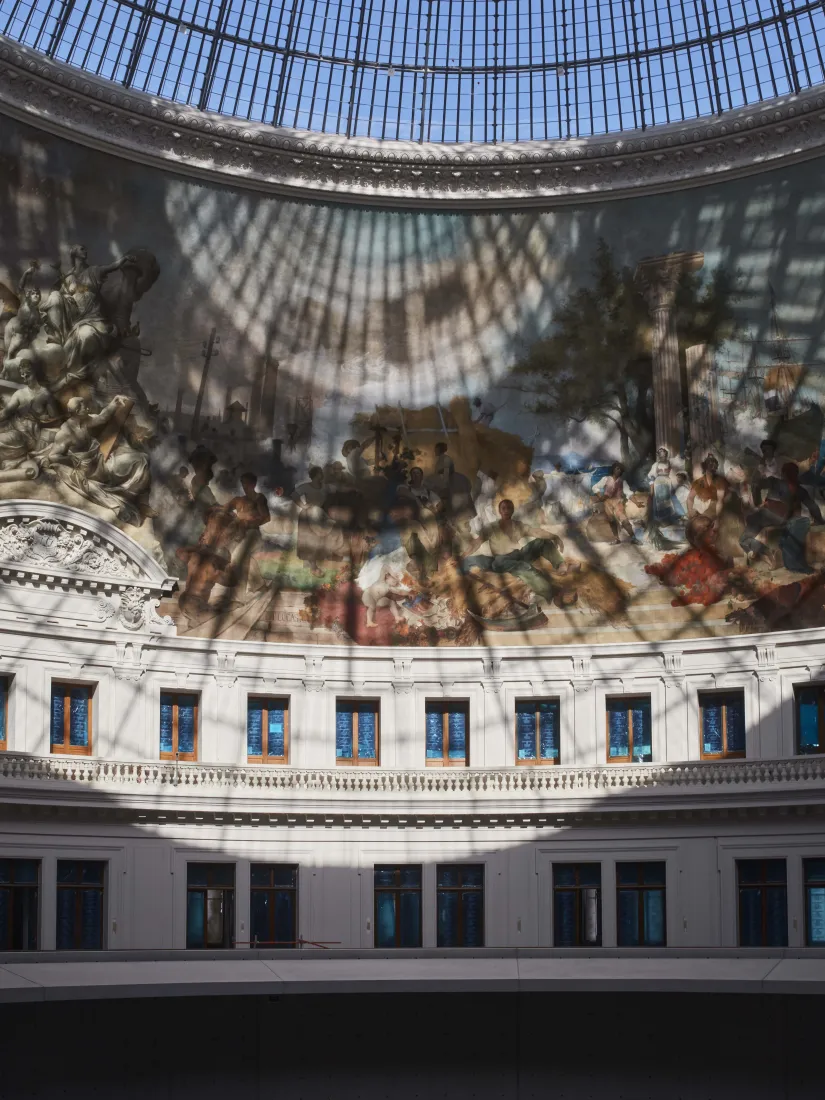
The dialogue between heritage and contemporary creation, at the heart of the architectural project of Tadao Ando, started with the restoration of a rediscovered, magnified historic site.
La restauration de l’état du bâtiment en 1889
« La Bourse de Commerce de Paris est remarquable à plusieurs titres. À travers les différentes strates historiques dont il témoigne, l’édifice constitue une œuvre iconoclaste. Son enveloppe témoigne ainsi de l’apport de chaque période : la colonne de l’ancien hôtel de Soissons (construite par l’architecte Jean Bullant pour Catherine de Médicis au 16e siècle), le plan circulaire et les façades intérieures de la première Halle au blé (édifiée par l’architecte Le Camus de Mézières entre 1763 et 1767), la coupole en fer, conçue par l’architecte François-Joseph Bélanger et l’ingénieur François Brunet entre 1806 et 1813, et enfin les façades extérieures, les couvertures, les aménagements intérieurs et les décors réalisés par l’architecte Henri Blondel, lors de la transformation de l’édifice en Bourse de Commerce, en 1889.
L’édifice ne constitue pas une simple superposition de ces strates historiques, mais plutôt une fusion des époques. Ainsi, lors de la transformation de la Halle au blé en Bourse de Commerce par Blondel en 1889, l’escalier à double révolution du Camus de Mézières est prolongé et intégré à un nouveau système de distribution moderne, tandis que la charpente métallique de Bélanger — une des plus grandes prouesses techniques du début du 19e siècle — est dotée d’une verrière et d’un décor peint.
De fait, la Bourse de Commerce constitue un manifeste de l’architecture parisienne des 16e, 18e et 19e siècles, reconnu par plusieurs degrés de protection : classement de la colonne de Médicis par liste de 1862, inscription en totalité par arrêté du 15 janvier 1975, la coupole et son décor étant classés par arrêté du 20 juin 1986. […]
« Au travers les différentes strates historiques dont il témoigne, l’édifice constitue une œuvre iconoclaste. » Pierre-Antoine Gatier
Une première campagne de sondages du bâtiment a permis de compléter l’analyse des ouvrages extérieurs et des éléments visibles. […] Ces investigations sur la structure ont été rendues nécessaires par l’absence de documents d’exécution de 1889. Tant par la recherche archivistique que lors des investigations in situ, ont été favorisées les démarches non destructives, pour parvenir à « lire » le bâtiment sans le léser. Des matériaux communs à la fin du 19e siècle, mais presque systématiquement perdus aujourd’hui, ont aussi pu être retrouvés. […] Les façades extérieures ont fait l’objet d’investigations complémentaires, permettant d’identifier la pierre de Saint-Leu qui les constitue. »
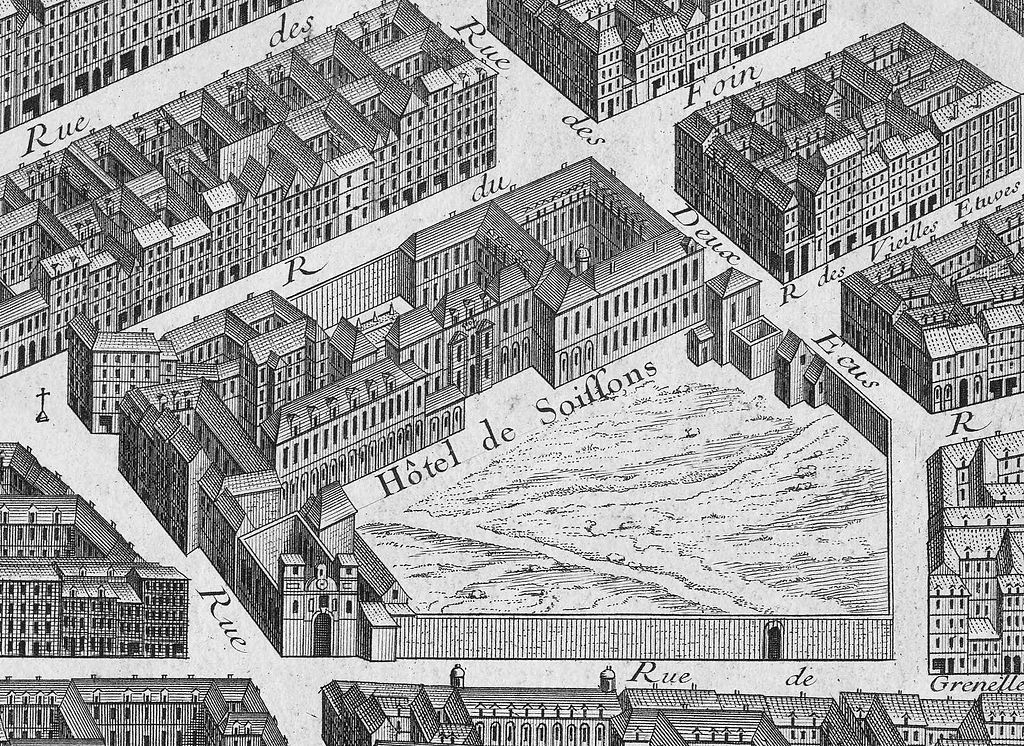
Les moments forts et les points clés de la restauration
La colonne Médicis, Une icône
« La colonne dite Médicis, qui flanque la façade extérieure de la Bourse de Commerce, est une icône du paysage parisien. On attribue à l’écrivain Louis Petit de Bachaumont la toute première mobilisation de l’histoire de la conservation en sa faveur. S’opposant publiquement à sa destruction en 1748, il manifesta ainsi pour la première fois l’attachement des Parisiens à ce vestige colossal de l’ancien hôtel de la Reine. La colonne est classée dès 1862, rompant avec l’histoire de l’édifice qui la jouxte, puis de nouveau conservée tandis qu’une partie du bâtiment est abattue en 1889. […]
Entre 1574 et 1584, la reine Catherine de Médicis confie à l’architecte Jean Bullant l’extension de l’hôtel existant […]. Dans une cour étroite, elle fait édifier la première colonne isolée de Paris, signal de sa puissance dans la ville. L’accès à la plateforme d’observation s’effectuait alors depuis une porte communiquant avec l’hôtel de la Reine et un escalier à vis terminé par une échelle, à deux mètres du sommet. Aujourd’hui, l’escalier à vis communique encore avec le deuxième niveau de la Bourse de Commerce par un passage voûté de quelques marches.
Inspirée par la colonne Trajane (édifiée à Rome à la fin du 2e siècle avant J.-C. sur l’ancien forum de l’empereur Trajan), elle est construite en pierre calcaire de l’Oise, à assises régulières hourdées au plâtre, comme l’ont révélé les analyses des rares fragments. Elle dispose d’une base sans ornement et d’un fût décoré de cannelures, de couronnes, de fleurs de lis, de cornes d’abondance, de chiffres, de miroirs cassés et de lacs d’amours déchirés. En partie haute, se dresse une plateforme-chapiteau surmontée d’une structure métallique. […] Si le monument est apprécié, sa fonction n’a jamais été identifiée. La colonne aurait servi de point d’observation à l’astrologue de la reine, Côme Ruggieri, sans que toutefois cette hypothèse ne soit vérifiée. […] Elle est dotée en 1764 d’un cadran solaire conçu par Alexandre-Guy Pingré […] puis devient un monument public lorsqu’elle accueille une fontaine en 1812 aujourd’hui disparue. L’actuelle restauration a pris le parti d’une stricte conservation, en maintenant les matériaux et l’ensemble des réparations successives conduites depuis 1925 jusqu’en 1981. »
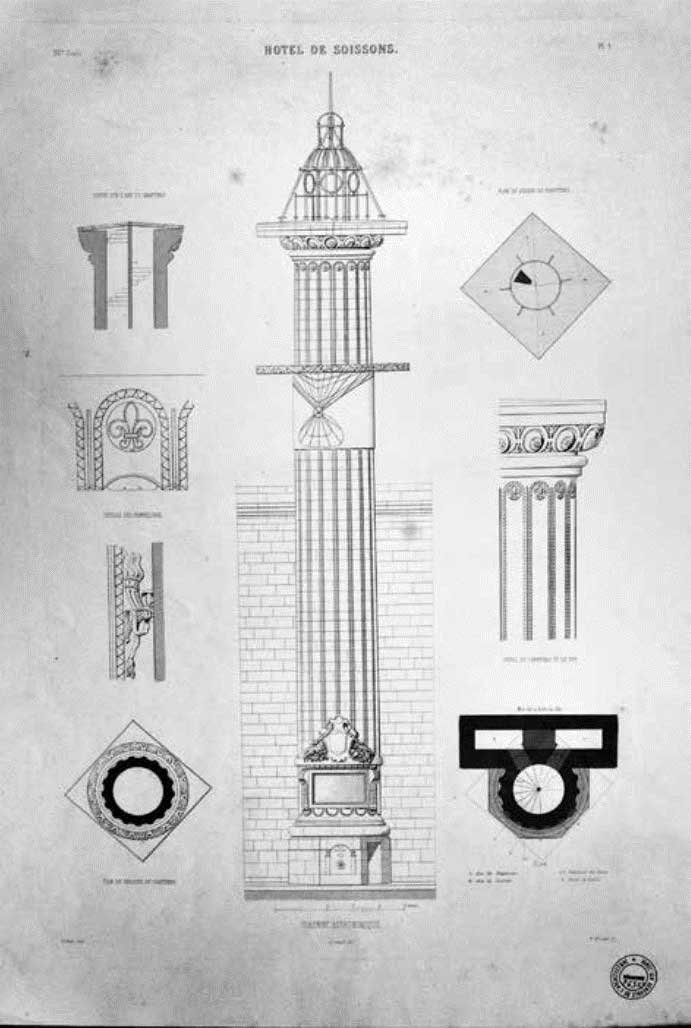
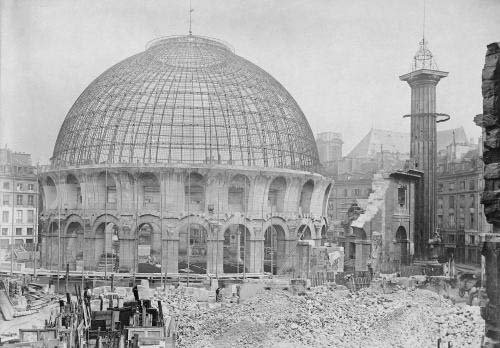
La Halle au blé, Une utopie circulaire
« Le programme de la Halle au blé est élaboré à partir de 1763 sur le terrain. Il s’inscrit dans une nouvelle conscience urbaine, affirmant l’importance de l’intérêt public, qui se développe dans la seconde moitié du 18e siècle. L’édification de la halle et du lotissement attenant est confiée à Nicolas Le Camus de Mézières, architecte expert juré du roi et de son université.
Le bâtiment proposé est inédit, par le plan urbain qu’il propose. […] Premier monument public conçu au centre d’un quartier de maisons locatives et desservi par un réseau de rues en étoile, le projet fonde son ori-ginalité sur la volonté de former deux halles en une, grâce à un bâtiment en arcades déployé autour d’une cour centrale.
Le choix d’un plan annulaire fait référence à la figure du cercle qui s’affirme, à l’époque des Lumières, comme l’un des modèles primordiaux de l’innovation architecturale. Il constitue une rupture avec le schéma traditionnel des halles-nefs rectangulaires. […]
La colonne Médicis est intégrée dans l’un des trumeaux de la façade extérieure de la Halle au blé. Ce geste rigoureux, qui rassemble le grand antique du 16e siècle et la construction nouvelle du 18e, introduit une irrégula-rité dans le strict rythme d’arcatures de l’édifice. Depuis lors, tous les construc-teurs sont intervenus sur ce bâtiment ont été confrontés à la variation que la colonne provoque irrémédiablement dans le systématisme constructif. […]
La façade intérieure constitue le réservoir archéologique du chantier du 18e siècle. Son parement, du côté de la rotonde, est par la suite recomposé par Blondel pour dessiner une nouvelle élévation à trois niveaux. Le revers de cette façade intérieure a été mis à nu à l’occasion du chantier de restauration, révélant les appareillages et mises en œuvre choisis par Le Camus de Mézières. […] L’architecte flanque la halle de deux escaliers à double révolution, l’un à l’est et l’autre à l’ouest. »
La coupole, du bois au fer, Une prouesse d’architecture et d’ingénierie
« La Halle au blé du Camus de Mézières constitue un manifeste architectural au plan radical : une halle annulaire, ouverte en son centre sur une vaste cour circulaire. De nouveaux besoins, résultant de l’usage de la halle conduisent rapidement à sa modification, faisant de la Halle au Blé un laboratoire structurel : elle reçoit successivement une coupole de bois en 1782, puis une coupole en fonte de fer, réalisée en 1811 par François-Joseph Bélanger et François Brunet, avec le concours de Jacques Ignace Hittorff, futur grand architecte du Paris du Second Empire. Cette coupole métallique — celle que nous voyons aujourd’hui — est alors le premier ouvrage jamais réalisé avec ce type de matériau, symbole du siècle de l’industrie naissant.
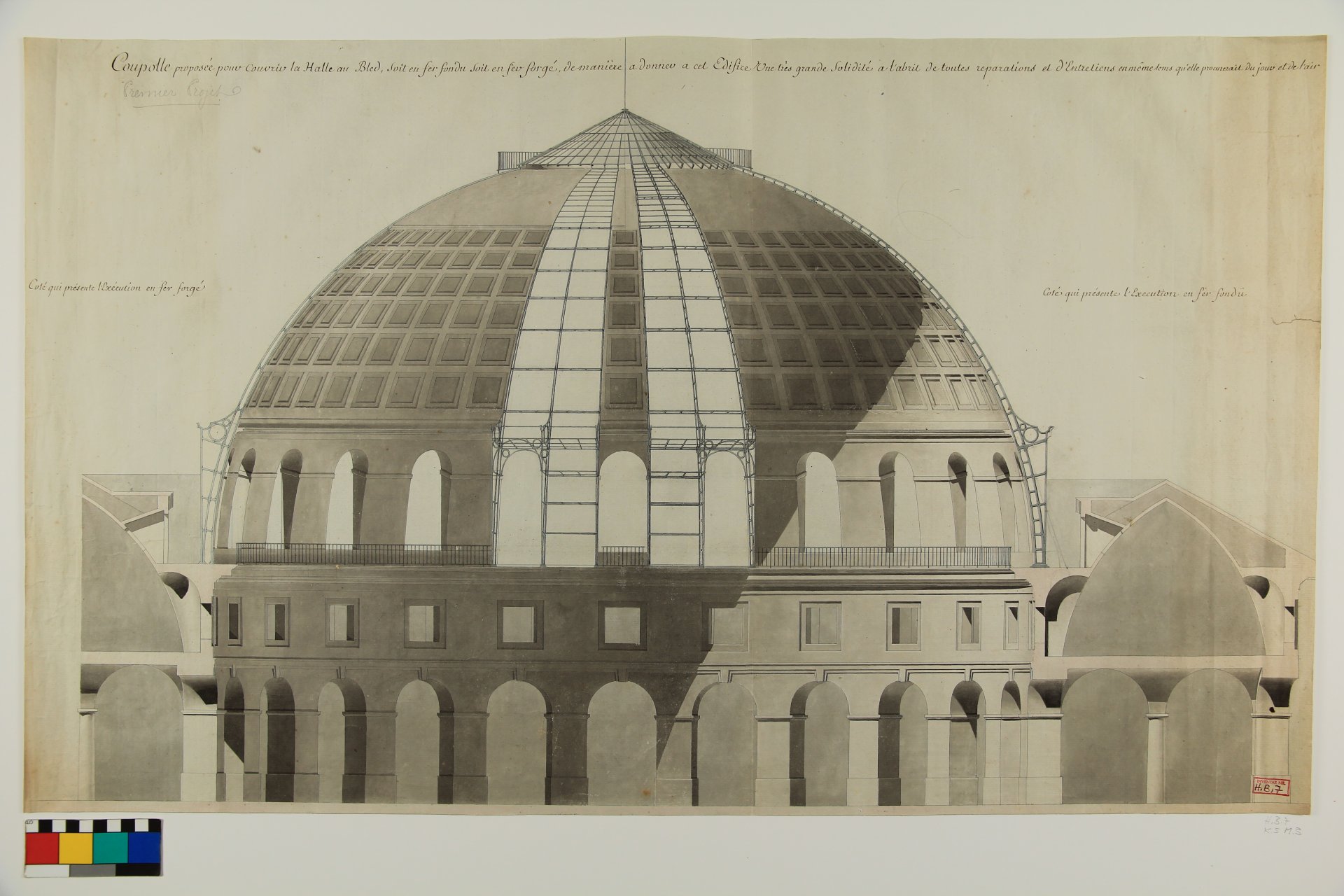
Jacques Ignace Hittorff conduit le chantier de la coupole sous la direction de Bélanger, laissant un témoignage dessiné exceptionnel de sa contribution. Nos recherches documentaires ont mis en évidence l’importance d’un fonds iconographique peu connu, conservé au Wallraf Richartz Museum de Cologne. Il rassemble deux cent quarante dessins. De nombreux autres documents semblent pouvoir être associés à la production des pièces de fonte (réalisées par les forges du Creusot). […] Ces dessins ont offert un appui déci-sif à la mise au point du projet de restauration de la charpente, un ouvrage mixte en fonte de fer et fer forgé. […] Au-delà de l’étude des fonds documen-taires, une série de relevés de la charpente actuelle a été effectuée. Une pre-mière reconnaissance à l’aide d’un drone a offert un diagnostic immédiat de la structure, avant l’établissement d’un relevé de géomètre au laser, confirmant l’absence de déformation structurelle et préalable à la modélisation complète de cette charpente. […] »
Pierre-Antoine Gatier, architecte en chef des Monuments historiques, maître d’œuvre.
Extrait de La Bourse de Commerce, Paris, coédition Bourse de Commerce — Dilecta, bilingue, à paraître en 2021.
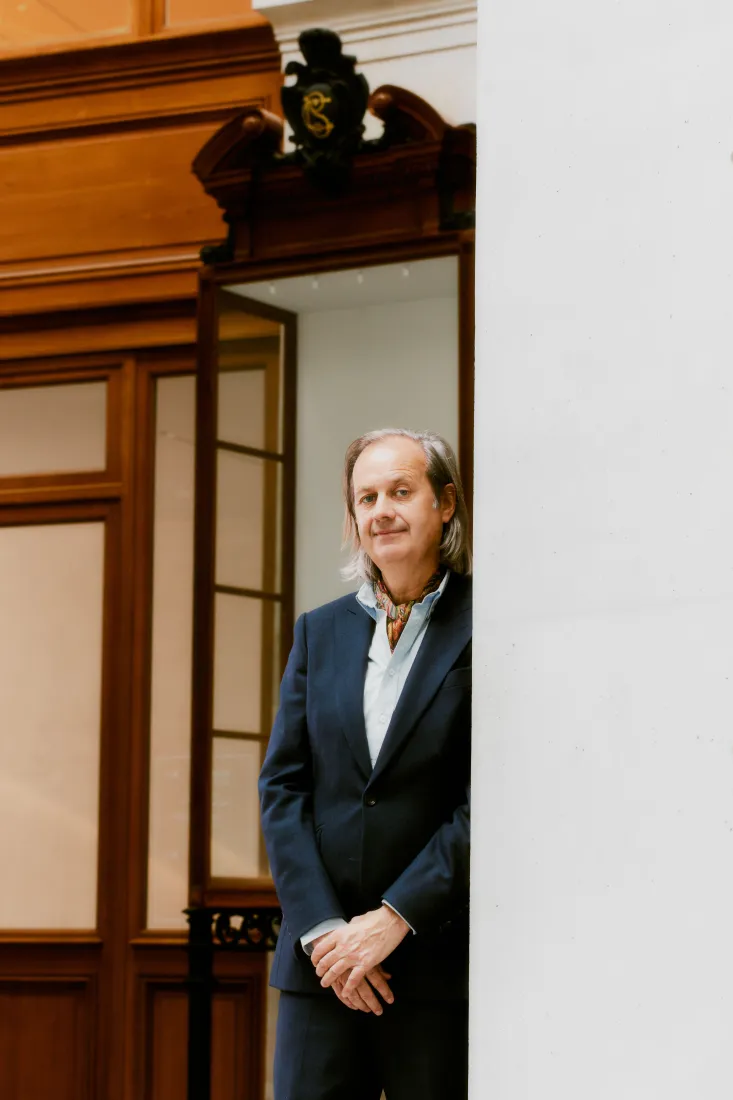
Pierre-Antoine Gatier: “Everything is a challenge in a restoration project.”

Pierre-Antoine Gatier, Head Architect with France’s Monuments historiques, looks back on the restoration and conservation work on the Bourse de Commerce — Pinault Collection.
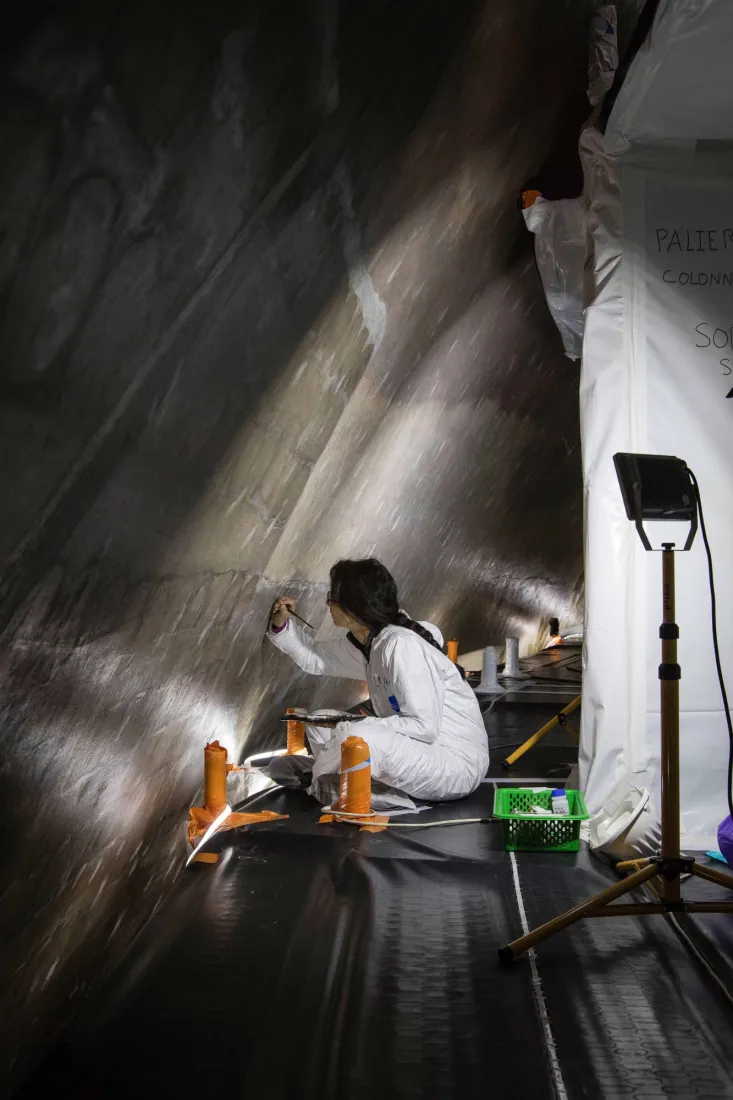
Restoration of the "panorama du commerce"

Stepping inside the Bourse de Commerce, visitors immediately look up at the dome, towering forty metres above their heads. There, they discover the immense painting created in 1889, spanning a full 360 degrees. In this article, we look at the work behind this exceptional restoration campaign.